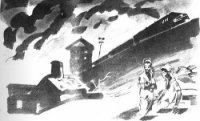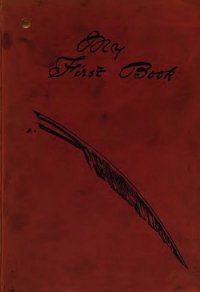Operation Nemesis: The Assassination Plot that Avenged the Armenian Genocide - Bogosian Eric (мир книг .txt) 📗
In later centuries the wholesale killing of princes was replaced with a system of sequestering them for their lifetime in “the cage,” a suite in the palace which they were never permitted to leave. This confinement transformed some princes into anxious neurotics, cut off from the outside world and in constant fear for their lives. There were instances of caged princes who became sultan but, having been driven mad by their confinement, were unfit to rule and were subsequently removed.
Very few men could enter the most private of the sultan’s quarters. Those who did were generally eunuchs or prepubescent pages. In 1566 Selim, the son of Suleiman, ascended the throne. He invited a Hungarian convert to Islam, Gazanfer, to take the job of chief white eunuch and head of the privy chamber. He had to accept castration as the price to be paid for this most lofty position. Gazanfer went on to become one of the most influential persons in the Ottoman Empire, serving for over thirty years.
Militarism and dynastic succession were not the only distinguishing aspects of the Ottoman world. Though it was an Islamic empire, the Ottoman Empire was for much of its history roughly fifty percent non-Muslim, either Christian or Jewish. The millet system, originally developed under Arab-Islamic Sharia law, contrasted sharply with the religious intolerance practiced in Europe, where “heretics” were routinely tortured and executed. Understanding that the non-Muslim minorities had a value in the empire, sultans had for hundreds of years followed the example of the Islamic Arabs before them and invited Christian and Jewish “People of the Book” to live in relative peace in the “House of Islam” as second-class subjects. Under the millet system, Muslims constituted the ruling class, while Christians and Jews were raya, the flock, who were tolerated as long as they kept to their place.
Though they were not forced by law to convert, Christian and Jewish subjects were subject to specific restrictions. They paid a tax that Muslims were exempt from. Their men could not marry a Muslim woman. Their church steeples could not be higher than the minarets of the mosques. Loud church bells were not permitted. They were forced to defer to Muslims at all times and had subordinate legal rights in a court of law. A Muslim master could kill or take property from Christians under his command with impunity.
Jews and Christians were “formally forbidden” to dress like Muslims or live near mosques, to build tall houses or buy slaves. “They… were not supposed to wear certain colours;… their houses or places of worship should not be ostentatious; they were excluded from positions of power,” with some exceptions.23 Most important, non-Muslims were forbidden to bear arms.
A millet system of self-governance on the part of each religious group was encouraged and took root, and each group (Greek, Armenian, Jewish) had its religious community leaders or patriarchs. In this way, the millets became political entities within the Ottoman Empire “representing” each community. Different millets were identified by their clothing. “Only Muslims could wear white or green turbans and yellow slippers. Greeks, Armenians and Jews were distinguished respectively by sky blue, dark blue (later red) and yellow hats, and by black, violet and blue slippers.”24 Legal issues that concerned only the millet could be resolved by the millet overseers. The leaders of the millets had power and acted as a conduit between the Sublime Porte and the communities. In time this relationship would evolve, allowing some Armenians to become very powerful within the construct of the Ottoman universe.
In the modern era, the fragmented and dispersed Armenian population existed in areas under Ottoman, Persian, and Russian control. These three antagonistic empires treated their Armenian populations in different ways. Very significantly, Armenians in the Ottoman universe lived as Christians in a Muslim world. In the Russian territories, mainly in the Caucasus (though the border was constantly shifting), Armenians were Christian in a world where the tsar saw himself as a champion of Orthodoxy. Further divisions within the Armenian populations broke along class lines: peasants, artisans, and tradespeople, merchants and wealthy elites moved within their own societies. Over time, the “Turkish” (western) Armenians and the “Russian” (eastern) Armenians would speak very different dialects and become culturally distinct.25
The Armenian Genocide was nothing less than the final clash of two civilizations: the ancient Armenian nation and the Ottoman Empire. The centuries-old intersection of two peoples had come to an end. Though the Armenians would continue to be a major presence in the Middle East and the Caucasus, they were no longer living in their homeland. Mere thousands remained of the millions who had dwelled there for millennia. By 1923, with the birth of the Republic of Turkey, the Armenian presence in Asia Minor would effectively be over.
CHAPTER TWO Rushing Headlong into the Modern Era, 1800–1914
Revolution requires extensive and widespread destruction, a fecund and renovating destruction, since in this way and only this way are new worlds born.
—Mikhail Bakunin, Statism and Anarchy
Whether or not they called themselves “modern,” from the middle of the nineteenth century onward the citizens of the West understood that the world was changing. Fueled by the Industrial Revolution, the idea that civilization is forever moving forward to new and greater heights caught every thinker’s imagination. This, in essence, was modernism. Progress animated all areas of human existence: finance, medicine, education, painting, literature, music, and, ironically, the art of making war. Combat achieved new levels of awesome and unprecedented destructiveness. Technologies combined to foster violence not only between nations but within empires. The Ottoman Empire, like the rest of the world, joined the rush to modernize.
Progress created political turbulence. From the mid-nineteenth century until the conclusion of World War I, assassination, revolution, and war plagued the world. In 1848 revolution broke out in Italy, Germany, Denmark, Hungary, Ireland, Romania, and Moldavia. Civil war and revolution would follow in the United States, Mexico, India, and China. The short-lived socialist regime known as the Paris Commune was born during this period, in 1871, and rebellions arose across the Balkans against Ottoman rule. Successive wars, including the massively destructive Crimean War, broke out between Russia and the Ottomans, leaving hundreds of thousands dead on both sides and further weakening the Turkic empire. No sooner had the Civil War ended before the United States government began an all-out war of extermination against the Plains Indians. The Boer Wars in South Africa, the Boxer Rebellion in China, as well as uprisings in India and the Philippines were all manifestations of a world order in flux. The interplay of modern political institutions and the mechanization of warfare laid waste to human life on a scale never before experienced.
From the killing fields of Gettysburg to the trenches of Alsace, humans now could slaughter one another by the tens of thousands in a matter of days. During World War I, the Battle of Verdun alone left three hundred thousand fatalities, an average of one thousand deaths a day for ten months. New weapons technologies would accelerate and intensify conflict, making possible sudden flashes of mass violence. It was during this period that the machine gun and long-range artillery were developed. Deadly chlorine gas was concocted in German laboratories and deployed by both sides in the Great War. Barbed wire and the simple but deadly fixed bayonet amplified the hell of trench warfare, while land and naval mines intensified the anarchy. The armored tank, the hand grenade, and the long-range carbine were all perfected during this initial era of modern warfare.




